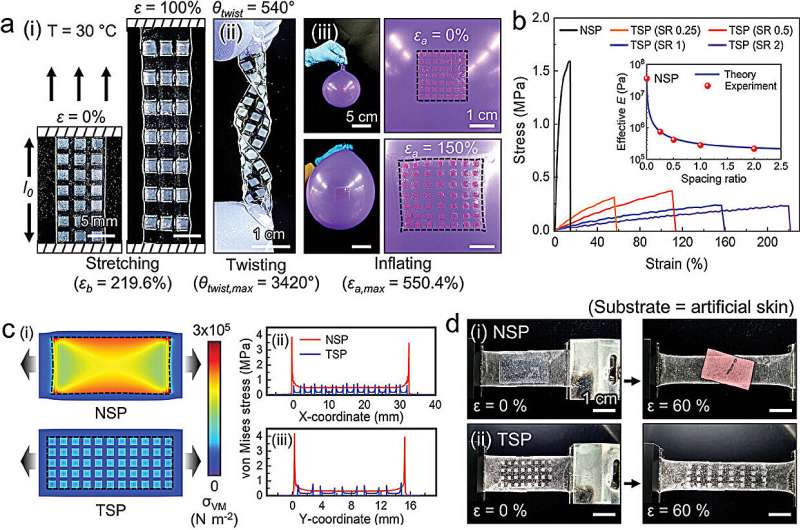Super-adhesive patches can adapt to different motions for enhanced skin interaction
A research team affiliated with UNIST has unveiled an ultra-strong adhesive patch platform that adheres effectively to rough skin surfaces and shows remarkable motion adaptiveness during dynamic body movements, all while offering irritation-free removal on demand. The key to this technology lies in the surface adaptability inspired by barnacles and armadillo carapaces, which feature a tessellated structure that balances rigidity and flexibility.
The team, led by Professor Hoon Eui Jeong from the Department of Mechanical Engineering and Professor Jae Joon Kim from the Department of Electrical Engineering at UNIST, along with researchers from the National Institute of Ecology (NIE), has introduced a highly adhesive, detachable, and stretchable skin patch, known as the Motion Adaptive Tessellation Patch.
This innovative technology is garnering attention for its potential to facilitate the commercialization of wearable electronic devices, such as health care monitoring systems and transdermal drug delivery systems. The research is published in the journal Advanced Materials.
The team designed this attachment patch by arranging shape memory polymers that mimic the characteristics of barnacle adhesive proteins and the structure of armadillo armor. This innovative approach enables the adhesive component to adjust its stiffness, allowing it to conform to uneven surfaces, such as those found in nature. The mechanism resembles the way soft adhesive proteins fill the contours of rough rocks before hardening to create a strong bond.
The shape memory polymer mimics this natural principle, allowing it to adhere to the skin’s irregularities while enabling easy, irritation-free removal through temperature control. Additionally, this mechanism allows for multiple attachments and detachments by merely adjusting the temperature.
The design is further enhanced by the incorporation of an armadillo-inspired structure, which promotes flexibility and resilience to ensure that the patch remains securely attached during intense movements. The armadillo’s armor features a “tessellation” structure where soft collagen fills the spaces between hard bony fragments, providing significant strength while still allowing for movement. By emulating this structure, the research team maximized adhesion by integrating elastic polymers with the shape memory polymer.
“Existing body-attached devices often fall short in terms of durability against deformation and repetitive stress induced by movement, frequently leading to skin irritation and discomfort during prolonged use,” stated Professor Jeong. “Through this study, we have developed an innovative adhesive technology capable of addressing these challenges.”
These attachable electronic devices not only maintain adhesion while running or navigating stairs but are also capable of measuring vital signs such as heart rate and blood pressure.
Professor Kim said, “To effectively embed batteries and sensors in these devices while acquiring high-quality bio-signals, it is crucial to maintain adhesion during vigorous movements. Our research seeks to overcome the limitations of existing technologies that restrict usability due to motion constraints. We aim to leverage these findings to facilitate technology transfer and initiate a startup.”
More information:
Geonjun Choi et al, Motion‐Adaptive Tessellated Skin Patches With Switchable Adhesion for Wearable Electronics, Advanced Materials (2024). DOI: 10.1002/adma.202412271
Ulsan National Institute of Science and Technology
Citation:
Super-adhesive patches can adapt to different motions for enhanced skin interaction (2024, November 29)
retrieved 30 November 2024
from https://techxplore.com/news/2024-11-super-adhesive-patches-motions-skin.html
This document is subject to copyright. Apart from any fair dealing for the purpose of private study or research, no
part may be reproduced without the written permission. The content is provided for information purposes only.

Comments are closed